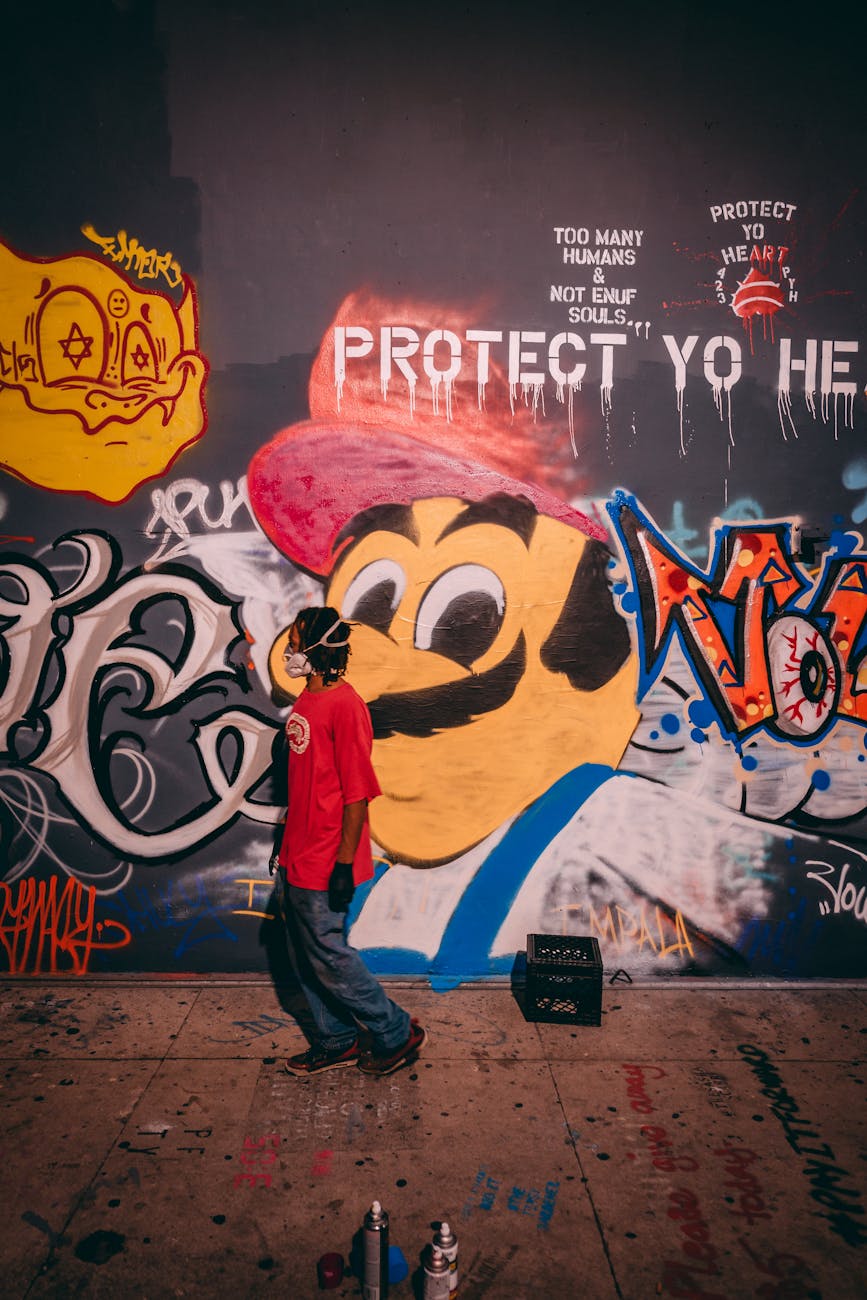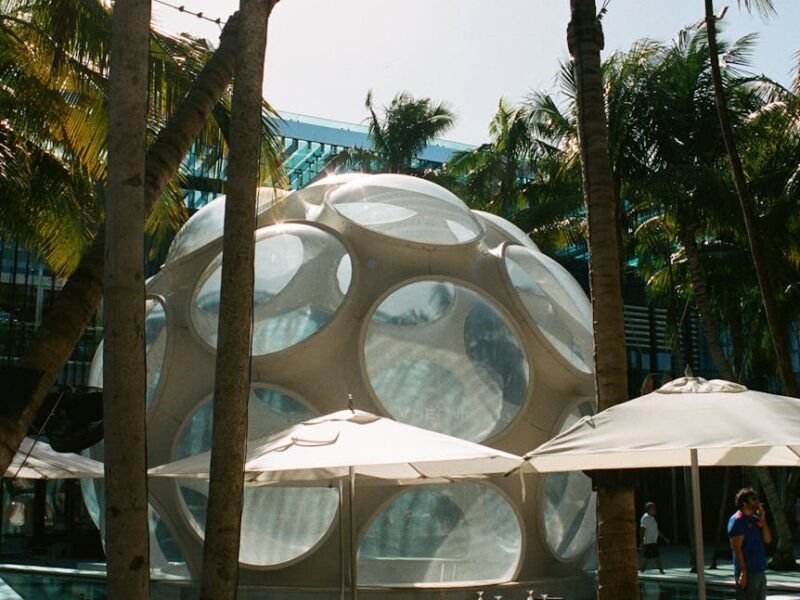Wynwood Miami: A Hub for Art, Culture, and Tourism
Wynwood, a vibrant neighborhood in Miami, has transformed from an industrial warehouse district into one of the world’s most renowned art scenes. It is a cultural epicenter that attracts artists, tourists, and influencers from all corners of the globe. Famous for its colorful murals, eclectic galleries, and immersive art installations, Wynwood has become a must-visit destination for anyone interested in art, culture, and urban revitalization.
The Birth of Wynwood as an Art District
Wynwood’s journey from a rundown industrial zone to an art haven began in the early 2000s. The credit for this transformation largely goes to Tony Goldman, a visionary real estate developer and art lover. In 2009, Goldman unveiled the Wynwood Walls, a curated collection of large-scale murals that has since become the heart of the neighborhood’s art scene. Goldman’s idea was simple yet powerful: to turn the vast blank walls of abandoned warehouses into canvases for graffiti and street artists.
Goldman saw Wynwood as a potential hub for urban art, offering emerging and established artists from around the world the opportunity to showcase their work in a public space. Over time, Wynwood Walls became an open-air gallery, drawing tourists, art collectors, and media attention. The success of this project quickly attracted galleries, cafes, boutiques, and other creative businesses, transforming Wynwood into a bustling cultural hub.
Street Art as a Medium of Expression
What sets Wynwood apart from traditional art districts is its emphasis on street art and the democratization of art. Here, the walls themselves are the gallery spaces, and the entire neighborhood acts as a massive canvas. Street art in Wynwood goes beyond mere aesthetics—it’s a medium of social and political expression. Artists use the walls to communicate powerful messages about issues such as immigration, inequality, environmental concerns, and the human condition.
Many well-known artists, including Shepard Fairey, Aiko, Ron English, and Kenny Scharf, have contributed to the dynamic landscape of Wynwood. These artists come from various backgrounds and artistic styles, adding to the diversity and vibrancy of the district. Wynwood not only highlights established figures in the world of street art, but also provides opportunities for emerging talent, creating a dynamic and ever-changing environment.
The Role of Wynwood Walls
The Wynwood Walls are at the heart of the neighborhood’s artistic identity. This outdoor museum showcases massive, eye-catching murals that change annually, ensuring a fresh experience for repeat visitors. With contributions from over 50 of the world’s leading street artists, the Wynwood Walls have played a significant role in legitimizing street art as a respected form of artistic expression.
The project started with just six walls but has since expanded to include numerous side streets, abandoned buildings, and even sidewalks. The Wynwood Walls have become iconic, attracting more than a million visitors each year. It’s a living gallery, constantly evolving with new installations and murals, which keeps the art community and visitors engaged. As part of Miami Art Week and Art Basel, the Wynwood Walls receive international attention, positioning Miami as a global art capital.
Wynwood’s Impact on Tourism
The transformation of Wynwood has had a profound impact on Miami’s tourism industry. Once a neighborhood that locals avoided, it is now one of the most visited areas in the city. Tourism in Wynwood has flourished, with over 2.9 million people visiting the district annually, according to recent statistics. These visitors come to experience the art, food, and unique culture that Wynwood offers.
One of the main reasons tourists flock to Wynwood is its accessibility. Unlike traditional art galleries or museums, Wynwood is free and open to the public, making it a highly inclusive space. This openness allows people of all ages and backgrounds to engage with art in a way that feels approachable and less intimidating than a formal gallery setting.
Wynwood also draws a younger, more digitally savvy audience. Instagram culture plays a big role in its popularity, as the vivid murals and unique backdrops provide the perfect settings for photoshoots. Influencers and tourists alike share their Wynwood experiences on social media, further fueling its popularity and making it a trendy, must-see destination for Miami visitors.
Wynwood’s Influence on Local Economy
Wynwood’s rise as a tourist destination has had significant economic benefits for the local community. The influx of visitors has spurred the development of cafes, restaurants, retail shops, and galleries. Local businesses have thrived due to the increased foot traffic, and new ventures continue to pop up throughout the district.
Restaurants such as KYU, known for its modern Asian cuisine, and Coyo Taco, which offers some of the city’s best street food, are just two examples of establishments that have become tourist favorites. The vibrant nightlife, with craft breweries like Wynwood Brewing Company and rooftop bars like No. 3 Social, also keeps visitors coming back after the sun sets. These businesses not only cater to tourists but also create jobs and opportunities for local residents.
The development of Wynwood has led to rising property values, a mixed blessing for the neighborhood. While it has attracted investment and new business, it has also contributed to gentrification, which has raised concerns among some long-time residents and local artists who worry about losing the authentic spirit of the neighborhood.
Wynwood as a Cultural and Social Space
In addition to its economic and touristic significance, Wynwood serves as a cultural hub for Miami. The neighborhood regularly hosts art walks, festivals, and community events that bring together residents and visitors. These events celebrate not only visual art but also music, dance, and culinary arts, offering a well-rounded cultural experience.
Wynwood’s Second Saturdays Art Walk is a particularly popular monthly event that attracts thousands of visitors. During this time, galleries open their doors to the public, street performers provide entertainment, and food trucks line the streets. It’s a lively event that exemplifies Wynwood’s community spirit, merging art, food, and music into one immersive experience.
Wynwood is also a venue for important discussions and social issues. Events like Miami’s Mural Festival or special art installations often focus on themes of social justice, environmental sustainability, and community empowerment. This makes Wynwood not just an artistic center but also a space for reflection and dialogue on important global and local issues.
Conclusion: The Future of Wynwood
Wynwood is more than just an art district; it’s a symbol of urban transformation, creativity, and the power of community. Its impact on both Miami’s tourism industry and its local economy is undeniable. Wynwood has become a place where art, culture, and commerce converge, making it one of the most unique and exciting neighborhoods in the world.
As Wynwood continues to evolve, it will undoubtedly face challenges, including managing gentrification and maintaining its artistic integrity. However, with its strong sense of community and deep roots in the arts, Wynwood is well-positioned to remain a vital part of Miami’s cultural landscape for years to come.
For those planning a trip to Miami, Wynwood is an essential stop on the itinerary. Whether you’re an art enthusiast, a foodie, or just looking for a unique cultural experience, Wynwood offers something for everyone. It’s a testament to the power of art in revitalizing urban spaces and creating vibrant, thriving communities.



